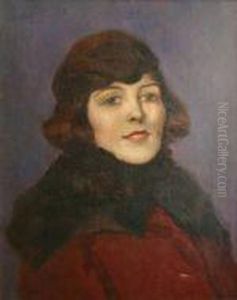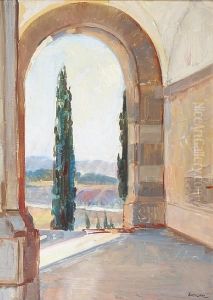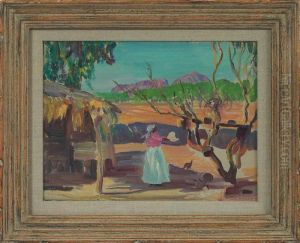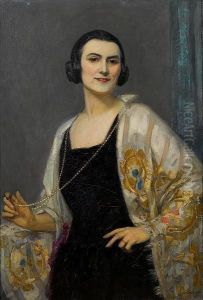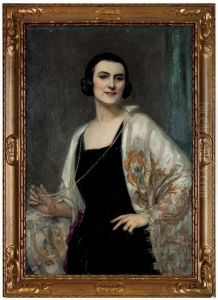John Henry Amschewitz Paintings
John Henry Amschewitz was a prominent South African artist, born in 1882 in South Africa. His artistic journey began at an early age, and his passion for art led him to pursue further education in Europe, which was a common practice among aspiring artists from the colonies seeking advanced training and exposure to the vibrant European art scene. Amschewitz settled in London for a period, where he enhanced his skills and absorbed the dynamic cultural influences that the city had to offer.
Amschewitz's work encompassed a variety of styles and subjects, reflecting the broad spectrum of influences he encountered throughout his career. He was particularly known for his portraiture, landscapes, and murals. His ability to capture the essence of his subjects with sensitivity and depth won him critical acclaim and a distinguished place among his contemporaries. One of his notable contributions to the art world was his involvement in the mural movement in the UK, where his works were celebrated for their vibrant narrative quality and technical proficiency.
Throughout his career, Amschewitz remained connected to his South African roots, often reflecting the country's landscapes and people in his works. His art played a role in bringing South African visual culture to the attention of a wider international audience, bridging the gap between the African continent and the global art community. Despite spending significant time abroad, his contribution to the South African art scene was profound, influencing a generation of artists in the country.
John Henry Amschewitz's legacy is preserved through his art, which continues to be celebrated in exhibitions and collections both in South Africa and internationally. His death in 1942 marked the end of a prolific career, but his influence persists, highlighting the enduring power of his artistic vision and its impact on the development of modern South African art.
